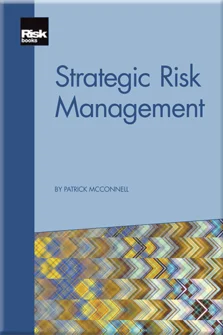Strategic Risk Assessment
Strategic Risk Assessment
Introduction
What is Strategy?
What is Strategic Risk?
Strategic Governance Risk
Different Strategies, Different Risks
Strategic Risk Assessment
Organic Growth Strategies
Acquisition Strategies
Productivity Strategies
Innovation Strategies
Restructuring Strategies
Evolution of Strategic Risks – A Case Study
Summary of Strategic Risks from Case Studies
Strategic Risk-Management Framework
Managing Strategic Positioning Risks
Managing Strategic Execution Risks
Summary
This chapter considers the very difficult question of how to assess strategic risks. The subject is difficult not only because there is great uncertainty, for example about external economic factors, but there is also enormous “ambiguity” about the options available to a board. Any description of a desired strategic position and its future business model is in some sense hypothetical, since it is describing something that does not exist (yet) and, in fact, may never exist (except on a “clean sheet” of paper). Ideally, one would be able to build a mathematical model of a particular strategic option, collect data and plug it into the model, to produce a result that can be compared rationally to the results (from the same model) for other options, making choices between strategic options relatively easy. But that is a pipe dream.
The assessment of strategic risks is, and will likely remain, a messy process that must combine qualitative with quantitative assessments. Both types of assessments are needed but both are difficult to implement and prone to error, which argues strongly for a robust process that can be reviewed and audited. This chapter describes a model for such a process
Copyright Infopro Digital Limited. All rights reserved.
As outlined in our terms and conditions, https://www.infopro-digital.com/terms-and-conditions/subscriptions/ (point 2.4), printing is limited to a single copy.
If you would like to purchase additional rights please email info@risk.net
Copyright Infopro Digital Limited. All rights reserved.
You may share this content using our article tools. As outlined in our terms and conditions, https://www.infopro-digital.com/terms-and-conditions/subscriptions/ (clause 2.4), an Authorised User may only make one copy of the materials for their own personal use. You must also comply with the restrictions in clause 2.5.
If you would like to purchase additional rights please email info@risk.net











